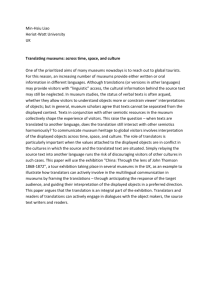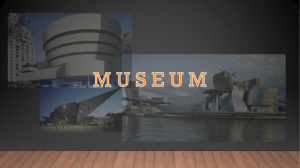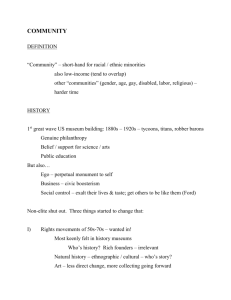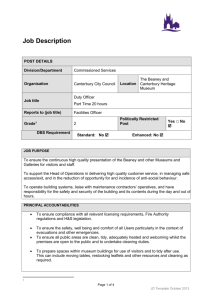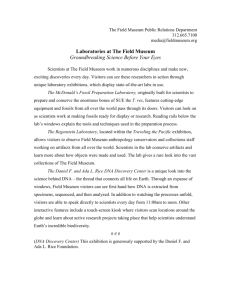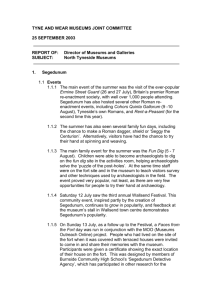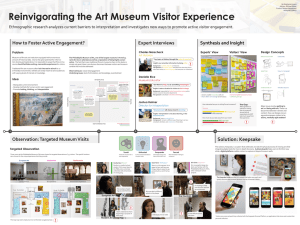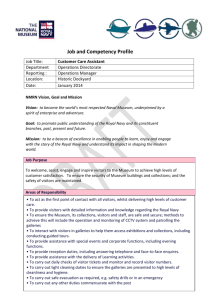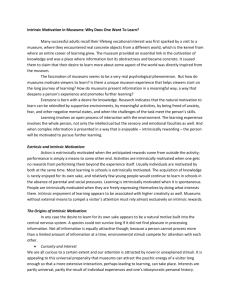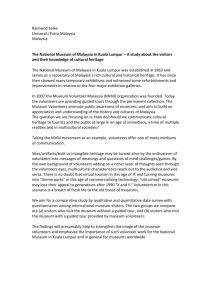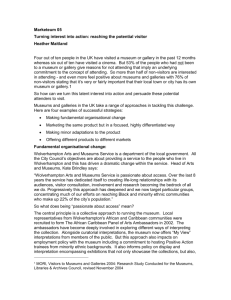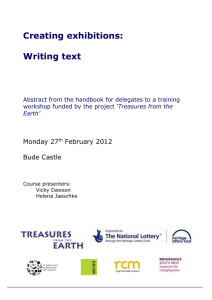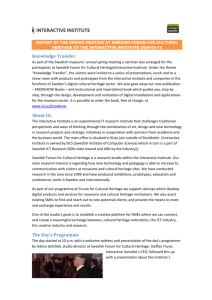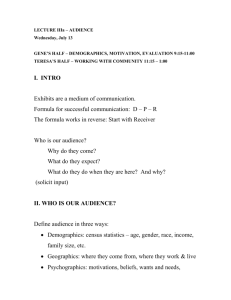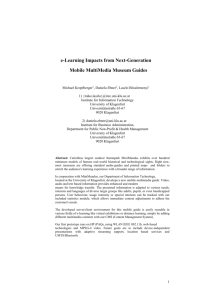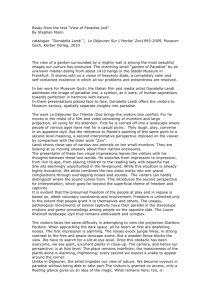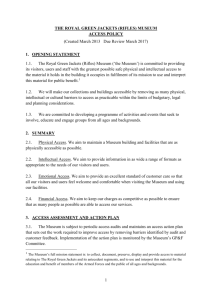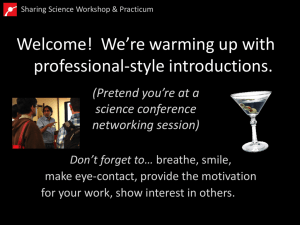Reading Summary
advertisement
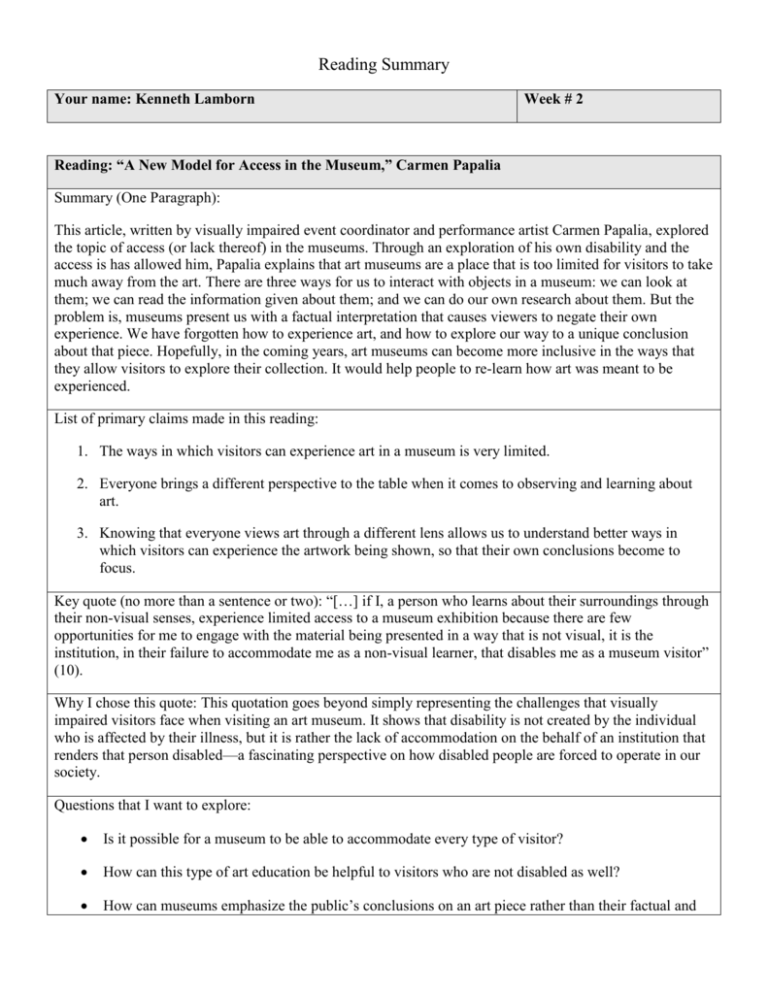
Reading Summary Your name: Kenneth Lamborn Week # 2 Reading: “A New Model for Access in the Museum,” Carmen Papalia Summary (One Paragraph): This article, written by visually impaired event coordinator and performance artist Carmen Papalia, explored the topic of access (or lack thereof) in the museums. Through an exploration of his own disability and the access is has allowed him, Papalia explains that art museums are a place that is too limited for visitors to take much away from the art. There are three ways for us to interact with objects in a museum: we can look at them; we can read the information given about them; and we can do our own research about them. But the problem is, museums present us with a factual interpretation that causes viewers to negate their own experience. We have forgotten how to experience art, and how to explore our way to a unique conclusion about that piece. Hopefully, in the coming years, art museums can become more inclusive in the ways that they allow visitors to explore their collection. It would help people to re-learn how art was meant to be experienced. List of primary claims made in this reading: 1. The ways in which visitors can experience art in a museum is very limited. 2. Everyone brings a different perspective to the table when it comes to observing and learning about art. 3. Knowing that everyone views art through a different lens allows us to understand better ways in which visitors can experience the artwork being shown, so that their own conclusions become to focus. Key quote (no more than a sentence or two): “[…] if I, a person who learns about their surroundings through their non-visual senses, experience limited access to a museum exhibition because there are few opportunities for me to engage with the material being presented in a way that is not visual, it is the institution, in their failure to accommodate me as a non-visual learner, that disables me as a museum visitor” (10). Why I chose this quote: This quotation goes beyond simply representing the challenges that visually impaired visitors face when visiting an art museum. It shows that disability is not created by the individual who is affected by their illness, but it is rather the lack of accommodation on the behalf of an institution that renders that person disabled—a fascinating perspective on how disabled people are forced to operate in our society. Questions that I want to explore: Is it possible for a museum to be able to accommodate every type of visitor? How can this type of art education be helpful to visitors who are not disabled as well? How can museums emphasize the public’s conclusions on an art piece rather than their factual and contextual conclusion that is given?

